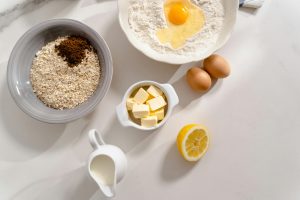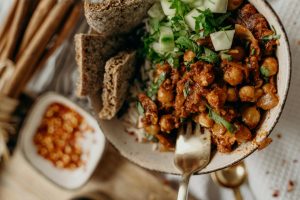The History and Techniques of Traditional Bread Baking
The smell of freshly baked bread wafting through the air, the crispy crust, and the soft, fluffy interior – there’s something truly comforting about traditional bread. From sourdough to baguettes, bread has been a staple food in many cultures for centuries. But have you ever wondered about its history and the techniques used in traditional bread baking? In this article, we’ll take a journey through time and explore the origins of bread and the methods behind this age-old practice.
The Ancient Origins of Bread
Bread-making has been around for thousands of years, dating back to ancient civilizations. The earliest known evidence of bread dates back to around 8000 BC, where hunter-gatherers would grind grains and mix them with water to create a paste that could be baked on hot stones. Over time, people started experimenting with various techniques and ingredients, leading to the development of different types of bread.
The Evolution of Baking Techniques
As civilizations advanced, so did bread-making techniques. The Egyptians were the first to cultivate yeast, which greatly improved the quality and texture of their bread. The Romans, on the other hand, were known for their round, flat loaves that were used as plates during meals. In the Middle Ages, the French introduced the use of ovens, leading to a wide variety of bread types and shapes.
During the Industrial Revolution, the process of bread-making became more mechanized, resulting in mass production and a decline in the quality of bread. However, in recent years, there has been a resurgence of interest in traditional bread-making, with a focus on using natural ingredients and traditional techniques.
The Techniques of Traditional Bread Baking
Sourdough Bread
Sourdough bread is made using a fermented, naturally occurring yeast called a sourdough starter. This starter is a mixture of flour and water that has been allowed to ferment for several days, resulting in a bubbly, acidic mixture. Sourdough bread has a tangy flavor and a chewy texture, making it a popular choice among bread lovers.
Baguettes
Originating from France, baguettes are long, thin loaves with a crispy crust and soft interior. The traditional technique used in making baguettes involves kneading the dough and stretching it gradually to develop the gluten, which gives the bread its airy structure.
Pita Bread
Hailing from the Middle East, pita bread is a flatbread that can be opened to create a pocket for filling. Traditional pita bread is made by mixing flour, yeast, and water to form a dough, which is then rolled out and cooked on a hot stone.
Brioche
Brioche is a rich, buttery bread that originated in France. The traditional method of making brioche involves adding large amounts of butter and eggs to the dough, resulting in a soft, velvety texture. It is often used in making sweet treats like French toast and bread pudding.
The Importance of Traditional Bread Baking
With the rise of processed foods and fast-paced lifestyles, there has been a shift towards convenience and speed in food production. However, traditional bread baking offers a return to the basics, with a focus on using natural ingredients and time-honored techniques. This not only results in healthier bread but also helps preserve cultural heritage and promote sustainable practices.
In conclusion, traditional bread baking has a rich history and is still a thriving practice today. Whether it’s the rustic sourdough or the elegant brioche, each type of bread has its unique story and methods. So the next time you bite into a warm, freshly baked loaf, take a moment to appreciate the time, effort, and tradition that went into its making.











